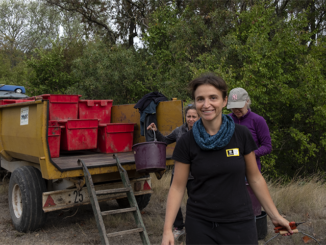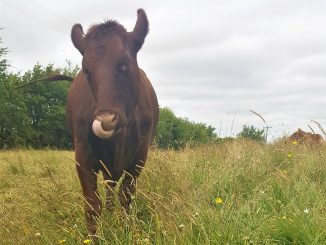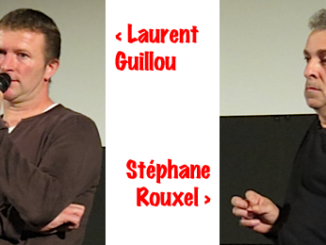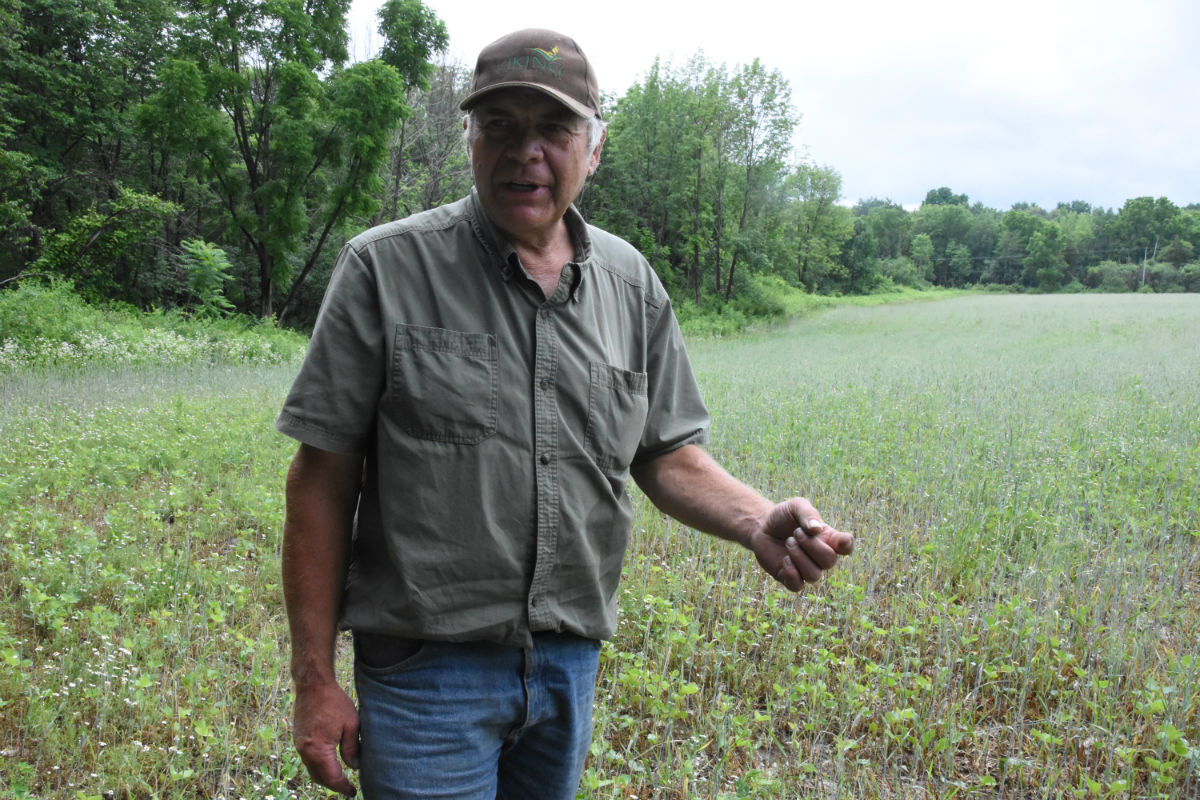
“Am I really prepared to poison the kids?” wondered American wheat farmer Klaas Martens, after an injury that he suspects was caused by herbicides. He has since converted the whole farm to organic. These days, he pays attention to the story his ‘weeds’ tell him, nurturing the community of organisms in his soil – and building community knowledge among farmers. Excerpt from a book by Marianne Landzettel.
The first time I heard of Klaas Martens, a farmer from Penn Yan in northern New York, was in January of 2014, when he was interviewed by Melinda Hemmelgarn on the ‘Food Sleuth’ podcast.
Martens told Hemmelgarn about returning to the farm after university. At the time, the way his father farmed seemed backward and out of date to him. With hybrid seeds, chemical fertilizers and the new generation of herbicides that had just come on the market he intended to bring about a ‘green revolution’ on the farm overnight, Martens recalled.
And then he tells Hemmelgarn how one morning, he had been spraying a mix of 2,4-D and other herbicides [2,4-D was the active ingredient in ‘Agent Orange’, a defoliant the US used during the Vietnam War]. He had come down from the tractor to fold up the sprayer and move to another field but suddenly found he couldn’t move this right arm.
Martens said he has no proof that the herbicides he sprayed that day caused the paralysis, but common sense suggested that this had been the case. “You reek of poison,” his wife had told him when he came through the door.
He slowly regained movement in his arm, but his hand stayed paralyzed for the rest of the summer. He was unable to continue spraying, and for ethical reasons he felt he couldn’t hire anyone to do so for him. He started thinking about how often his work overalls, reeking of pesticides, had gone into the washing machine together with children’s clothing. “Am I really prepared to poison the kids?” he’d wondered.
Soon afterwards he and his wife, Mary-Howell, took the decision to convert the whole farm to organic.
He didn’t come to organic farming as a complete novice. In a farming magazine he’d read about a processor who was desperately looking for growers who could supply organic wheat. Martens became curious and started to do some research.
At nearby Cornell University, he found books published in Europe in the 1920s and 30s that talked about weed suppression through long rotations. Martens drew the reverse conclusion: if American farmers, year on year, had grown corn, soy and wheat as monocultures, they had also created ideal conditions for weeds.
He decided that he wanted to try out alternative methods and see for himself whether they worked. To Martens, research and farm trials belong together; how much knowledge gained in a lab is worth can only be assessed in the field.
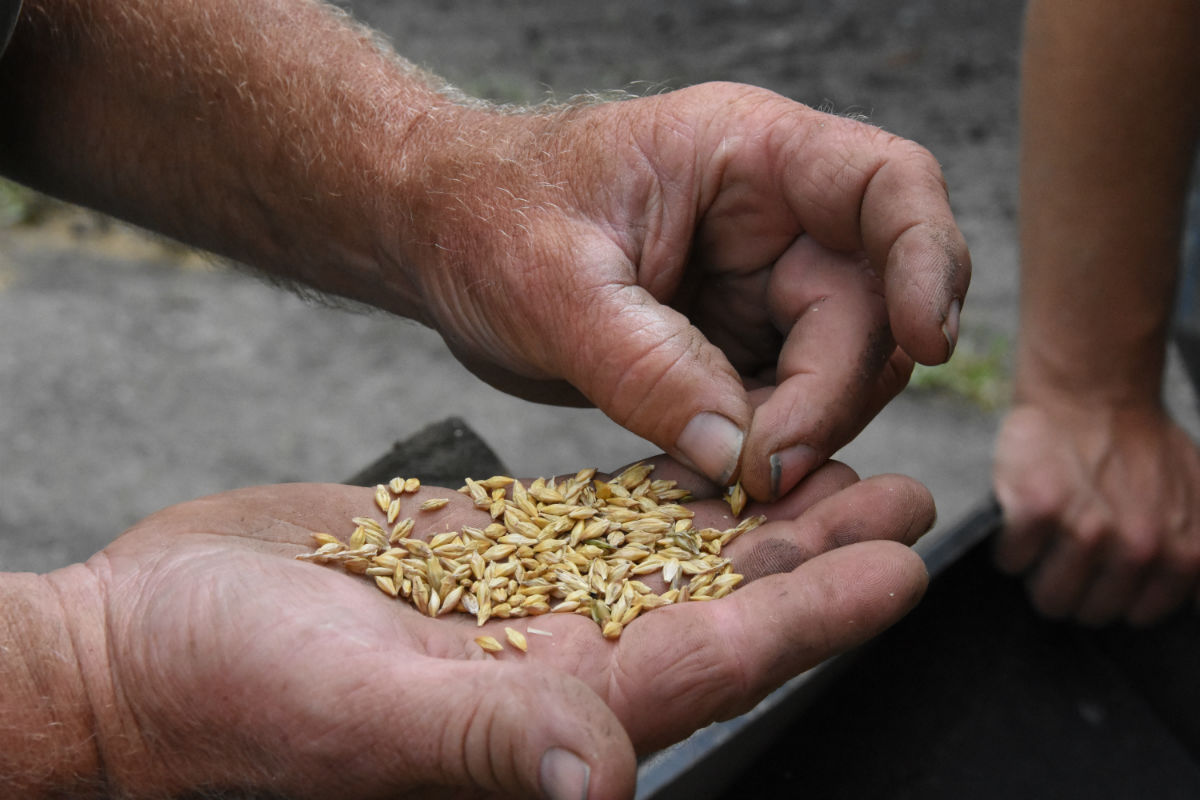
Asking the right questions
June is a very busy month on the farm, but Klaas Martens still makes time for our visit, and within minutes we’re deep in conversation. “We’ve only been measuring yield; we didn’t look at the effects on the soil, on nutritional value on crops like wheat, on the ecosystem. Scientists saw what they wanted to see and told us to ignore anything that didn’t fit,” says Martens. […]
We drive to a field Martens calls his field lab. It is surrounded by woods on three sides, and the previous owner simply abandoned it after managing it conventionally over a very long period. The soil is degraded, and only weeds seem to thrive. Crops were prone to disease and acted like a magnet for every conceivable pest.
“Farmers ask the wrong questions,” says Martens. “When their agronomist sees weeds, he says: kill them. The right question is: why are they here? What can they teach me? It is the attitude: Do we see something that needs to be killed or do I see an imbalance?”
Martens has walked a few meters into the field while naming the plants he spots. “Every field tells a story,” he says and starts translating the narrative for me: chamomile indicates a lack of calcium. But a soil analysis is needed to decide whether the soil really lacks calcium itself or whether it lacks the microbes that ‘prepare’ calcium for the plants. And there is no need to eradicate chamomile, says Martens; it will wilt and have no negative impact on the growth of other plants.
A number of different plant species, all with yellow flowers, indicate the presence of sulfur. One of them is ragweed; it can grow quite tall, but nowhere near as tall as the glyphosate-resistant plants ubiquitous in many fields in the Midwest.
Then there is sparrow vetch – not a problem, says Martens, as it will never catch up with a thriving soybean plant. Summer vetch indicates that there is not a lot of nitrogen in the soil, which means soybeans will do well here.
Martens names more ‘indicator’ plants and what they tell him about the field. It’s been four years since he started observing this particular patch of land. In the first year, the weeds ran riot. In the second year there were fewer weeds because the soil environment had changed: the weed seeds had to contend with an environment that was a lot less favorable than the one in which the parent plants had done so well. Off-spring of the weeds that were happy there the year before didn’t find the same environment. In the third and fourth year, perennial plants like golden rod and other, woodier species began to move in. In fall he planted rye and peas as cover crops which started to regrow in spring.
The Martens’ have been harvesting the pea shoots and added them to salads. There are so many peas that harvesting the shoots and selling them in a farmer’s market would be a viable option, but it’s the type of crop that doesn’t quite fit into the farm’s system. […]
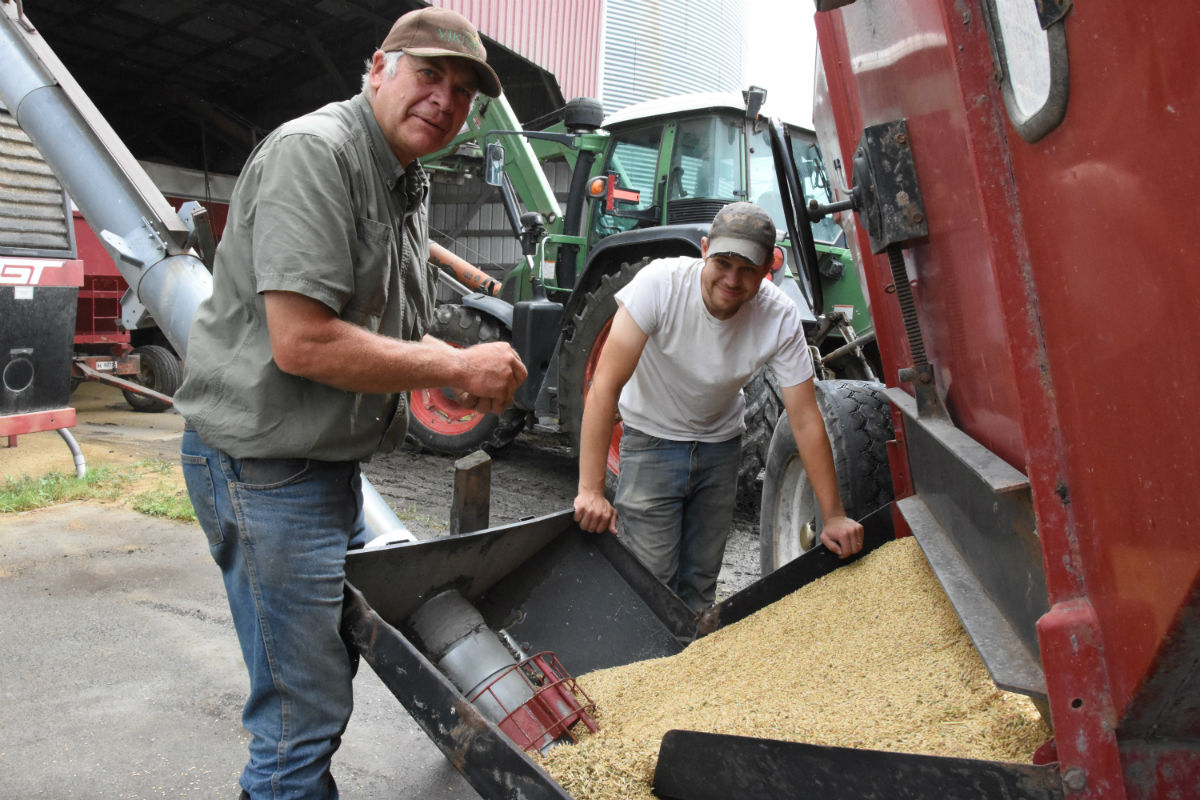
Everything is connected
In our conversation, Martens puts details into a larger context; he develops hypotheses only to immediately test them against observations. For him, nothing, no event, no action, no observation, stands on its own, everything is connected, part of a system, or a network.
System, network and community are synonyms for the same principle. Farming does not happen in isolation; for Martens, the community in which he lives, the neighboring farm families, people living in Penn Yan, are just as important.
On the farm, he promotes soil health by looking after the community of soil organisms that sustain the growth of his crops. Off the farm he cooperates with his neighbors, helps and supports them.
For him, everything hinges on community and what he calls ‘community knowledge’: in a group individual knowledge starts to add up and develop into ‘community knowledge’, a valuable resource that, in turn, defines the character of a community.
Klaas Martens’ philosophical musings are part of the discussion at lunch, which we share at the huge wooden table in the farmhouse kitchen. One very practical way to build community and community knowledge is the ‘agricultural circle’ Martens organizes during the winter months.
“We sit in a circle because we are all equal and then we talk about issues and try to come up with solutions,” he says. “Sometimes the decision is taken that more information and training is needed – for example how to read and interpret a soil test correctly – but we don’t give recipes, we don’t have them, it is all about observation and sharing.”
This is an excerpt from the book ‘Regenerative Agriculture: Farming with Benefits. Profitable Farms. Healthy Food. Greener Planet’ by Marianne Landzettel (published by World University Service, ISBN-10: 1838380507, ISBN-13: 978-1838380502). The book tells you what needs to be done to achieve ‘good soil’ and why that is so important. It describes how bad farming practices led to the Dust Bowl and that today, this type of soil erosion continues to happen in the US, but in Europe too. The book also delves into how agrochemical companies poisoned large parts of the Hawai’ian islands and the people who live there.
Das Buch ist auch auf Deutsch erhältlich: Vielleicht haben wir noch 10 Jahre.
More on regenerative agriculture
Regenerative Agriculture part 1 | Resources Must Be Replenished
Regenerative Agriculture part 2 | A Soils-First Farming & Food Policy
Regenerative Agriculture part 3 | Working With Nature, Not Suppressing It
Comparing Organic, Agroecological and Regenerative Farming part 1 – Organic
Comparing Organic, Agroecological and Regenerative Farming part 2 – Agroecology
Comparing Organic, Agroecological and Regenerative Farming part 3 – Regenerative



